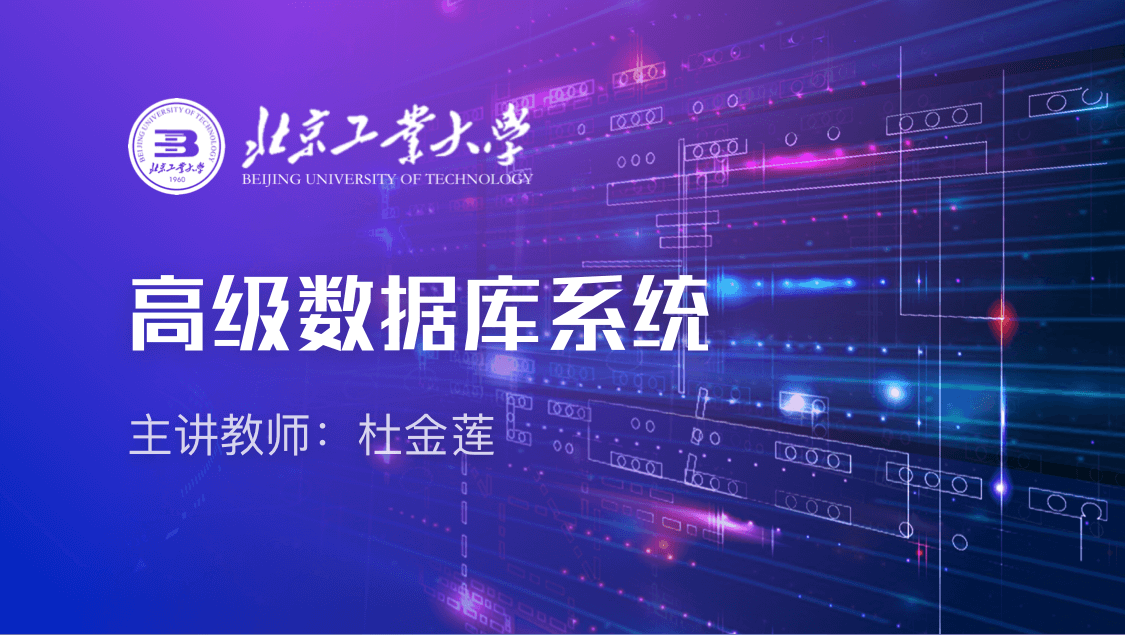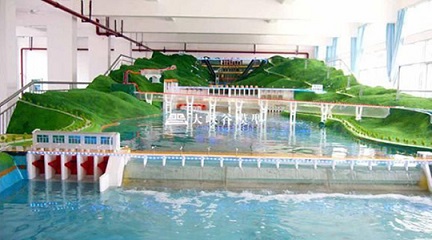
当前课程知识点:Introduction of New Structural Regional Economics > 4. Principals of New Structural Regional Economics > 4.4 Spatial Optimal Equilibrium > 4.4 Spatial Optimal Equilibrium
返回《Introduction of New Structural Regional Economics》慕课在线视频课程列表
返回《Introduction of New Structural Regional Economics》慕课在线视频列表
欢迎大家继续学习新结构区域经济学导论
本节课 我们重点学习
新结构区域经济学基本原理之四
空间最优均衡原理
缩小区域经济差异
是各国致力于解决的重要问题之一
而适度的区域经济差异
又构成了区域要素流动的条件
为空间优化奠定了基础
因此 从空间视角来看
区域通过要素流动具有自我调节作用
进而可能实现
空间均衡发展的基本原理
我们将借助物理学势能概念
阐述空间最优均衡形成过程
势能是指物质系统因各个物体之间
或者说是物体各个部分之间
存在相互作用而具有的能量
物体被举高
或者发生弹性形变就具有势能
比如弹性势能 重力势能
具体来看
势能是储存于一个系统内的能量
也可以释放或者转化为其他形式的能量
它不属于单个物体
而是相互中的物体所共有的
这里我们主要借鉴重力势能
那么 就区域而言
主要是指区域梯度势能
区域梯度势能是指
不同地区之间经济发展水平
经济实力的差距
正是这种差距
蕴含了推动要素流动的能量
区域梯度具体来看包含三个方面
首先是要素价格的梯度
比如土地价格 劳动力价格
在区域之间的显著差异
其次是市场需求梯度
即不同地区之间的人均收入
消费水平和需求层次差异
最后是产业结构梯度
即区域之间产业表现出多元化
阶段化特征
正是由于梯度势能差异
使得不同区域之间的要素流动
成为可能
这是空间均衡的基础
进一步来看
空间梯度
是大国综合特征的一个重要体现
这在中国体现得尤为明显
一方面
它构成了区域发展差距的
地理条件
可以依托区域不平衡
而发挥经济效率优势
另一方面
它又为区域经济的持续发展
提供了更长久的增长过程
以及更广阔的空间纵深
正是时间和空间维度上的梯度缓冲
才可能带来一国内部的
区域经济转型
产业结构转换以及产业转移
由于基础禀赋的差异
导致区域之间
存在明显的空间梯度差异
由梯度差异带来的梯度势能
成为要素流动的重要动力之一
例如
不同地区由于工资水平的差异
使得不同地区的劳动力流动成为可能
劳动力会选择由低工资率地区
向高工资率地区流动
并且
由于不同行业
以区域要素禀赋结构为基础
因此要素流动会表现为
行业和区域异质性
进一步来看
内部空间梯度势
能引致人口资本等要素
由欠发达地区向发达地区转移
而外部空间梯度
使得发达国家和发展中国家
经贸合作潜力和动力趋于加强
区域之间的生产要素流动
一方面有利于区域资源优化配置
另一方面 更重要的是
它有利于
先进技术和知识的广泛传播
和区域生产技术水平的提高
此外
由于落后地区
客观存在比较优势产业
区际生产要素的流动
还有利于促进落后地区的发展
缩小地区经济发展的差距
即便劳动力由工资比较低的地区
向工资比较高的地区流动
以解决本地区的剩余劳动力的问题
实际上也改善了
本地区的生产要素配置
进而会促进本地区的生产率的提高
这对中国来说尤其重要
20世纪80年代
中国东南沿海地区
凭借优越的地理位置
和劳动力成本优势
不断吸引国际制造业的转移
为东南沿海制造业的发展
奠定了基础
随着工业化进程的深入推进
东部地区集中了大量制造业企业
产业规模和要素集聚程度持续扩大
与中西部地区形成明显的产业梯度
近年来
伴随着中国快速的经济发展
经济结构调整
和产业转型升级加快
制造业呈现出
由东南沿海
逐步向内陆转移的趋势
早期主要出现在
以加工贸易为主的劳动密集型产业
之后部分资本密集型
和技术密集型行业也陆续参与其中
一方面源于
劳动力 土地和原材料等要素
成本的不断上涨
导致制造业生产
面临愈发严重的要素约束
不得不转向更具比较优势的地区
另一方面
西部大开发
东北振兴
和中部崛起等区域发展战略的陆续出台
为产业转移
提供了良好的政策支撑
通常情况下
产业转移发生在
不同经济发展阶段的地区之间
表现为发达地区的部分企业
转移到欠发达地区
本质则是产业要素
在地理空间上的优化再配置过程
而持续的产业转移
将带来的空间均衡
我们知道
空间梯度差异带来要素流动
会导致势能差动态变化
就像钟摆
重力势能转换过程中
势能差变化
在没有外力作用下
最终趋于稳定
如果将空间势能转换过程
与钟摆过程类比
如果充分发挥有效市场的
资源配置作用
和有为政府的引导作用
空间最终实现相对均衡
最后 是本节课的参考文献
好 以上就是对空间最优均衡原理的
简单介绍
谢谢大家
-1.1.1 China's Physical Geography
--1.1.1 China's Physical Geography
--1.1.1 Test
-1.1.2 Hu Line
--1.1.2 Test
-1.1.3 Economic catch-up of the central and western China
--1.1.3 Economic catch-up of the central and western China
--1.1.3 Test
-1.2.1 Overview of China’s economy
--1.2.1 Overview of China’s economy
--1.2.1 Test
-1.2.2 Coastal special economic zones in China
--1.2.2 Coastal special economic zones in China
--1.2.2 Test
-1.2.3 Western Development strategy in China
--1.2.3 Western Development strategy in China
--1.2.3 Test
-1.2.4 Northeast China Revitalization Plan
--1.2.4 Northeast China Revitalization Plan
--1.2.4 Test
-1.2.5 Rise of Central China Plan
--1.2.5 Rise of Central China Plan
--1.2.5 Test
-1.3.1 Coordinated regional development and main functional area
--1.3.1 Coordinated regional development and main functional area
--1.3.1 Test
-1.3.2 China’s urban agglomeration pattern and the economic effect
--1.3.2 China’s urban agglomeration pattern and the economic effect
--1.3.2 Test
-2.1 Agricultural location theory
--2.1 Agricultural location theory
--2.1 Test
-2.2 Growth Pole Theory
--2.2 Test
-2.3 The Stages of Economic Growth
--2.3 The Stages of Economic Growth
--2.3 Test
-2.4 Pole & Axis System Theory
--2.4 Pole & Axis System Theory
--2.4 Test
-2.5 Center-periphery theory
--2.5 Test
-3.1 Why New Structural Economics
--3.1 Why New Structural Economics
--3.1 Test
-3.2 The Theoretical Foundation of New Structural Economics
--3.2 The Theoretical Foundation of New Structural Economics
--3.2 Test
-3.3 Does New Structural Economics Offer Explanations?
--3.3 Does New Structural Economics Offer Explanations?
--3.3 Test
-3.4 Application for Industrial Policy
--3.4 Application for Industrial Policy
--3.4 Test
-3.5 Does the idea of New Structural Economics work?
--3.5 Does the idea of New Structural Economics work?
-4.1 Regional Externality
--4.1 Test
-4.2 Endowment Structure Transformation
--4.2 Endowment Structure Transformation
--4.2 Test
-4.3 Role Boundary of Facilitating Government
--4.3 Role Boundary of Facilitating Government
--4.3 Test
-4.4 Spatial Optimal Equilibrium
--4.4 Spatial Optimal Equilibrium
--4.4 Test
-4.5 Evolution of Dynamic Spiral
--4.5 Evolution of Dynamic Spiral
--4.5 Test
-5.1 China's Development Experience and OFDI
--5.1 China's Development Experience and OFDI
--5.1 Test
-5.2 Commonness and New Trends of Developing Countries
--5.2 Commonness and New Trends of Developing Countries
--5.2 Test
-5.3 Industrialization of Developing Countries with Special Economic Zones
--5.3 Industrialization of Developing Countries with Special Economic Zones
--5.3 Test
-5.4 Growth Identification and Facilitation Framework (GIFF)
--5.4 Growth Identification and Facilitation Framework (GIFF)
--5.4 Test
-5.5 GIFF in Practice and Case Studies (Nigeria, Benin and Uzbekistan)
--5.5 GIFF in Practice and Case Studies (Nigeria, Benin and Uzbekistan)
--5.5 Test
- 6.1.1 The global competitiveness model and its theoretical basis
-- 6.1.1 The global competitiveness model and its theoretical basis
--6.1.1 Test
- 6.1.2 The Brief introduction of the Theory of County Economic Competitiveness
-- 6.1.2 The Brief introduction of the Theory of County Economic Competitiveness
--6.1.2 Test
- 6.2.1 Situation of the Chinese Counties: Development Stage、Location Characteristics and Natural Res
-- 6.2.1 Situation of the Chinese Counties: Development Stage、Location Characteristics and Natural Res
--6.2.1 Test
- 6.2.2 The other Situation of the Chinese Counties and The Case of Qinyuan Pencil
-- 6.2.2 The other Situation of the Chinese Counties and The Case of Qinyuan Pencil
--6.2.2 Test
- 6.2.3 The County's Development Strategy (comparative advantage) Analysis
--6.2.3 The County's Development Strategy (comparative advantage) Analysis
--6.2.3 Test
-6.2.4 The Other County's Development Strategy (comparative advantage) Analysis and Conclusion
--6.2.4 The Other County's Development Strategy (comparative advantage) Analysis and Conclusion
--6.2.4 Test
-6.3.1 The Case of Jinjiang and Guanling
--6.3.1 The Case of Jinjiang and Guanling
--6.3.1 Test
- 6.3.2 The Case of Qianyang and Changzhi
-- 6.3.2 The Case of Qianyang and Changzhi
--6.3.2 Test
- 6.3.3 The Case of Hotan
-7.1.1 Targeted Poverty Alleviation Strategy
--7.1.1 Targeted Poverty Alleviation Strategy
--7.1.1 Test
-7.1.2 Cases of the Old Revolutionary Base Areas
--7.1.2 Cases of the Old Revolutionary Base Areas
--7.1.2 Test
-7.2 Growth Identification and Industrial Policy: Jilin Revitalization
--7.2 Growth Identification and Industrial Policy: Jilin Revitalization
--7.2 Test
- 7.3.1 The Carrying Capacity of Yangtze River Economic Belt
-- 7.3.1 The Carrying Capacity of Yangtze River Economic Belt
--7.3.1 Test
- 7.3.2 The Development of Yangtze River Economic Belt
--7.3.2 The Development of Yangtze River Economic Belt
--7.3.2 Test
-7.4 Growth Identification and Facilitation: Integration of Yangtze River Delta and High-quality Deve
--7.4 Growth Identification and Facilitation: Integration of Yangtze River Delta and High-quality Deve
--7.4 Test
-Final examination


